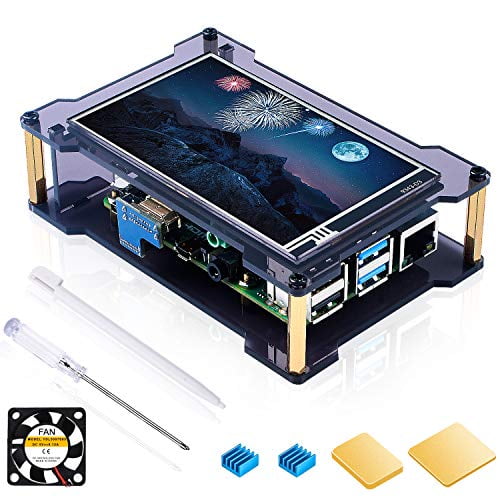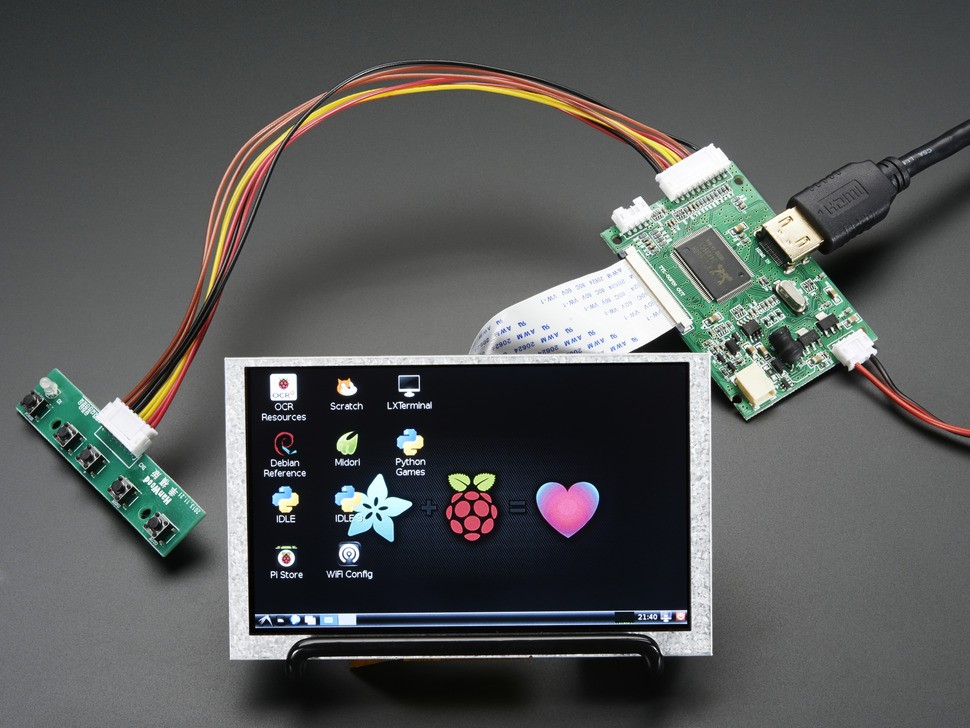Monitoring your Raspberry Pi 4's performance is essential to ensure smooth operation, especially for hobbyists and professionals alike. A system monitor helps track CPU usage, memory consumption, disk activity, and network performance, providing insights into potential bottlenecks. With numerous free options available, selecting the right tool can significantly enhance your experience with Raspberry Pi 4.
Raspberry Pi 4 has become a popular choice for developers and enthusiasts due to its affordability and versatility. However, maintaining optimal performance requires proper monitoring tools. Understanding how to leverage free system monitors ensures that your Raspberry Pi 4 operates efficiently, delivering the best possible results.
This comprehensive guide explores the best free system monitoring solutions for Raspberry Pi 4, offering detailed insights and practical advice to help you make an informed decision. Whether you're a beginner or an advanced user, this article will equip you with the knowledge needed to maximize your Raspberry Pi 4's potential.
Read also:Kannadamovierulz Your Ultimate Guide To Exploring Kannada Cinema
Table of Contents
- Introduction to Raspberry Pi 4 System Monitor Free
- Overview of Raspberry Pi 4
- Why You Need a System Monitor
- Best Free System Monitors for Raspberry Pi 4
- Installation Guide for Free Monitors
- Tips to Improve Raspberry Pi 4 Performance
- Data Visualization Techniques
- Troubleshooting Common Issues
- Comparison of Free System Monitors
- Conclusion
Introduction to Raspberry Pi 4 System Monitor Free
The Raspberry Pi 4 is a powerful single-board computer designed for a wide range of applications, from home automation to cloud computing. A system monitor plays a crucial role in managing its resources effectively. By utilizing free system monitors, users can gain valuable insights into their device's performance without incurring additional costs.
Free system monitors not only provide essential metrics but also empower users to identify and resolve performance issues proactively. This article delves into the importance of system monitoring and highlights the top free tools available for Raspberry Pi 4.
Understanding the features and functionalities of these tools will enable users to choose the most suitable option for their specific needs, ensuring optimal performance and reliability.
Overview of Raspberry Pi 4
Raspberry Pi 4 is the latest iteration in the Raspberry Pi series, boasting enhanced specifications and capabilities. Equipped with a quad-core processor, improved memory options, and dual-display support, it caters to both beginners and advanced users.
Key features of Raspberry Pi 4 include:
- Quad-core Cortex-A72 processor
- Up to 8GB RAM
- Gigabit Ethernet and USB 3.0 ports
- Support for dual 4K displays
These features make Raspberry Pi 4 an ideal choice for a variety of projects, from media centers to IoT applications. However, to fully harness its potential, effective system monitoring is essential.
Read also:Tamilblasters New Link Today Movie Downloads Uncovered
Why You Need a System Monitor
A system monitor is indispensable for maintaining the health and performance of your Raspberry Pi 4. It provides real-time data on CPU usage, memory consumption, disk activity, and network performance, enabling users to identify and address potential issues promptly.
Key benefits of using a system monitor include:
- Improved system stability
- Optimized resource utilization
- Early detection of performance bottlenecks
By regularly monitoring your Raspberry Pi 4's performance, you can ensure that it operates efficiently and avoids potential downtime or crashes.
Best Free System Monitors for Raspberry Pi 4
Several free system monitors are available for Raspberry Pi 4, each offering unique features and functionalities. Below are some of the best options:
HTOP
HTOP is a popular, interactive process viewer for Linux systems, including Raspberry Pi 4. It provides a user-friendly interface for monitoring CPU and memory usage, making it an excellent choice for beginners and advanced users alike.
Key features of HTOP include:
- Real-time process monitoring
- Color-coded output for easy visualization
- Support for keyboard shortcuts
With its intuitive interface and comprehensive features, HTOP is a must-have tool for anyone looking to optimize their Raspberry Pi 4's performance.
Glances
Glances is another powerful system monitoring tool that supports Raspberry Pi 4. It offers a web interface and supports exporting data to various platforms, making it a versatile choice for monitoring remote devices.
Key features of Glances include:
- Support for multiple plugins
- Customizable dashboard
- Integration with external tools
Glances' ability to provide detailed insights into system performance makes it an ideal choice for users seeking advanced monitoring capabilities.
VNStat
VNStat is a lightweight network traffic monitor designed for Raspberry Pi 4. It tracks incoming and outgoing traffic, providing valuable insights into network usage patterns.
Key features of VNStat include:
- Minimal system resource usage
- Command-line interface
- Support for historical data analysis
VNStat's simplicity and efficiency make it an excellent choice for users looking to monitor network performance on their Raspberry Pi 4.
Installation Guide for Free Monitors
Installing free system monitors on Raspberry Pi 4 is a straightforward process. Below is a step-by-step guide for installing HTOP, Glances, and VNStat:
Installing HTOP:
- Open the terminal on your Raspberry Pi 4.
- Run the command:
sudo apt update. - Install HTOP using:
sudo apt install htop. - Launch HTOP by typing:
htop.
Installing Glances:
- Update your package list:
sudo apt update. - Install Glances:
sudo apt install glances. - Run Glances:
glances.
Installing VNStat:
- Update your system:
sudo apt update. - Install VNStat:
sudo apt install vnstat. - Start VNStat:
vnstat.
By following these simple steps, you can quickly set up free system monitors on your Raspberry Pi 4 and begin tracking its performance.
Tips to Improve Raspberry Pi 4 Performance
Optimizing your Raspberry Pi 4's performance involves more than just monitoring its resources. Below are some practical tips to enhance its efficiency:
- Regularly update your operating system and software packages.
- Disable unnecessary services and applications.
- Use a high-quality power supply to prevent voltage drops.
- Install a heatsink or fan to improve cooling.
Implementing these tips will help ensure that your Raspberry Pi 4 operates at peak performance, delivering reliable results for your projects.
Data Visualization Techniques
Data visualization plays a crucial role in understanding system performance metrics. By presenting data in graphical formats, users can quickly identify trends and patterns, enabling them to make informed decisions.
Popular data visualization tools for Raspberry Pi 4 include:
- Grafana
- InfluxDB
- Matplotlib
These tools allow users to create custom dashboards and charts, providing a clear and concise overview of their device's performance.
Troubleshooting Common Issues
Despite regular monitoring, issues may arise that affect your Raspberry Pi 4's performance. Below are some common problems and their solutions:
- High CPU usage: Investigate running processes and terminate unnecessary ones.
- Memory leaks: Restart your device or update problematic software.
- Network connectivity issues: Check your network settings and restart your router if necessary.
By addressing these issues promptly, you can maintain the stability and reliability of your Raspberry Pi 4.
Comparison of Free System Monitors
Choosing the right system monitor for your Raspberry Pi 4 depends on your specific needs and preferences. Below is a comparison of HTOP, Glances, and VNStat:
| Tool | Key Features | Pros | Cons |
|---|---|---|---|
| HTOP | Interactive process viewer, real-time monitoring | User-friendly interface, lightweight | Limited network monitoring |
| Glances | Web interface, plugin support | Comprehensive monitoring, customizable | Resource-intensive |
| VNStat | Network traffic monitoring, historical data | Efficient, low resource usage | No CPU or memory monitoring |
This comparison highlights the strengths and weaknesses of each tool, helping users make an informed decision based on their requirements.
Conclusion
Monitoring your Raspberry Pi 4's performance is essential for ensuring optimal operation and reliability. By utilizing free system monitors such as HTOP, Glances, and VNStat, users can gain valuable insights into their device's performance without additional costs.
We encourage readers to try out these tools and determine which one best suits their needs. To further enhance your experience, consider implementing performance optimization tips and exploring data visualization techniques.
Feel free to share your thoughts and experiences in the comments section below. Additionally, don't hesitate to explore other articles on our website for more valuable insights into Raspberry Pi 4 and related technologies.

